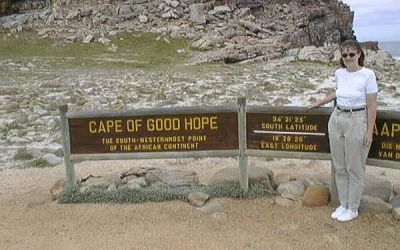Travel and photography go hand in hand.
I met Gabriel during my international student exchange semester in 2011 in possibly one of the most unlikely places in the USA: Iowa. Although I thought I was meeting a very talented photographer for a photo shoot, it turned out Gabriel was much more than that. This witty, multitalented French-Canadian-American (yes, holds three passports) was also a businessman with an impressive history of travels including a year-long round-the-world trip in 2009 and, as you will see from the excerpts below, fun-tastic blogging skills! Evidently, travel was our common interest and a common denominator for the start of our friendship.
Having visited 103 countries and territories, I was curious to read and find out some of the most hilarious but also near death experiences Gabriel has had. Here are some excerpts from Gabriel’s travel writings:
On bonding with a tribesman in Dani Village, Papua in 2007:
“We didn’t have much to talk about, seeing how neither of us could speak the other’s language. And given that he was naked save for the curved penis gourd sticking up in front of his chest, fashion talk was out of the question.
So I did the next best thing: reached into my shirt pocket, pulled out a pack of cigarettes, and offered him one. I don’t smoke, but as all Papuans appear to be compulsive chain smokers, he accepted gratefully, lit up and puffed away contentedly. Ah, male bonding at its best.”
An excerpt from Gabriel’s story on his near death experience in the Sahara desert in 2003.After their Land Rover breaks down, he and his brother realize that it cannot be repaired and the next military check point is at least 30 miles of desert away:
“One thing was certain: we either had to reach the checkpoint by early the next morning or we were toast. While 8 hours of walking would be doable, 12 hours would be very iffy on so little water. With sunrise at 6:00, if we didn’t reach it by the time the sun started really pounding around 8:00, we’d soon collapse on the road from heat exhaustion. No second chances.
So we had a lot on our minds, and braced ourselves to experience the Sahara up close and personal.
Then God intervened.
At precisely 6:45, Sayeed exclaimed: “I think I see a car!”
Here is a short and fun interview with Gabriel, read on!
What is the oddest place you have ever spent the night?
On a sand dune, in the middle of the Sahara. Wouldn’t have been so odd if it had been planned camping, but it was after being miraculously rescued by a random archeological expedition. I slept in my clothes right on the sand.
Worst dorm room or hostel experience?
One of the most traumatic was a full bedbug infestation, which led to hundreds of bites—a true nightmare!
What is the first thing you pack before taking off?
My passport. Everything else is replaceable. 🙂
You have an unlimited travel budget for 24 hours. What is your itinerary?
Antarctica! It’s the only continent I haven’t been to, and it’s not a budget destination.
If you were confined to one country for the rest of your life, where would you choose… and what would your profession of choice be?
Gasp! NOOOoooooo…! lol. I’d have to pick the United States, both because my entire business career is based there and it offers amazing diversity of travel adventures all on its own.
How do you choose the books you want to read during your travels? Can you suggest any to our members?
Sometimes I’ll post on Facebook asking for recommendations from friends, which has led to some fabulous books I never would have otherwise considered (like the Hummingbird’s Daughter and The Poisonwood Bible). I also check lists of award winners, which are full of true gems (e.g. Lonesome Dove and The Orphan Master’s Son, both Pulitzer Prize winners). Same with lists on Goodreads or suggestions on Amazon. And, invariably, trading book recommendations with other travelers (someone in the jungles of Borneo recommended Midnight’s Children).
What is the title of your future biography?
Ha! The chapters are still writing themselves, so too early just yet.
Best single technical advice you could give about travel blogging to our members?
Make sure you do regular backups of your photos and files, preferably separate from your stuff (i.e. internet or mailed copies home).
You, unfortunately, have been condemned to die, but fortunately, you get to have any meal in the world before you go. What is your menu?
Any meal? The boiled brain of my condemner. Hehe.
To read more about Gabriel’s adventures during his 360 days traveling around the world visit his blog Openshaw360.com and to see some of his amazing travel photography visit travel.openshawphoto.com.







